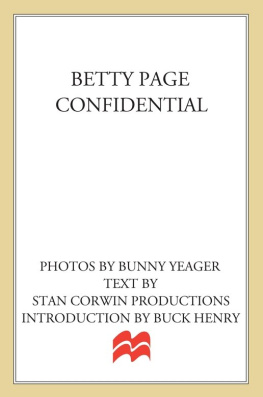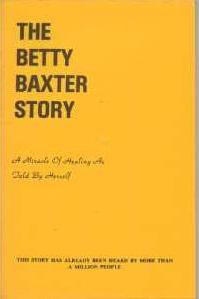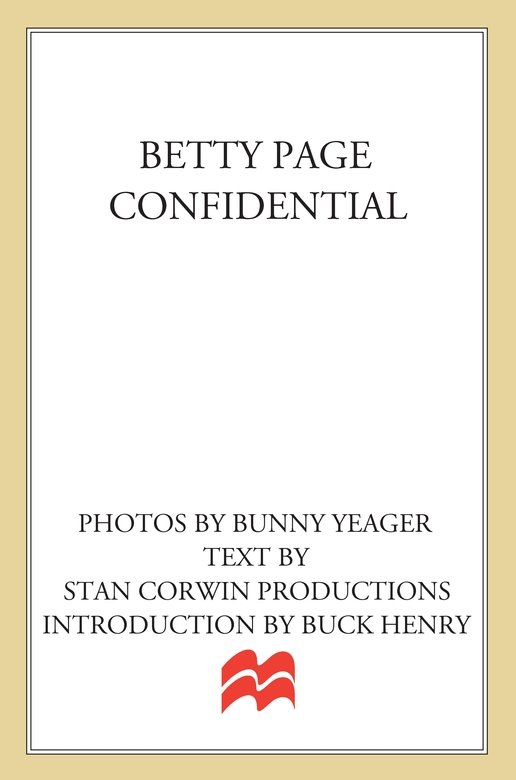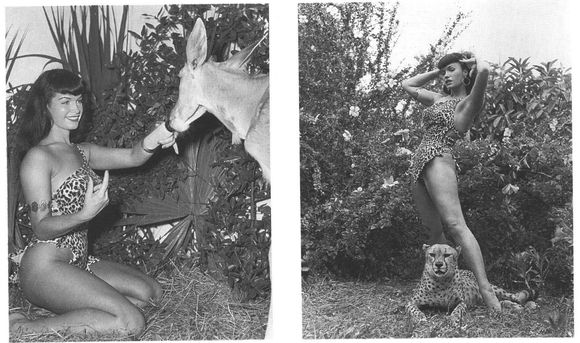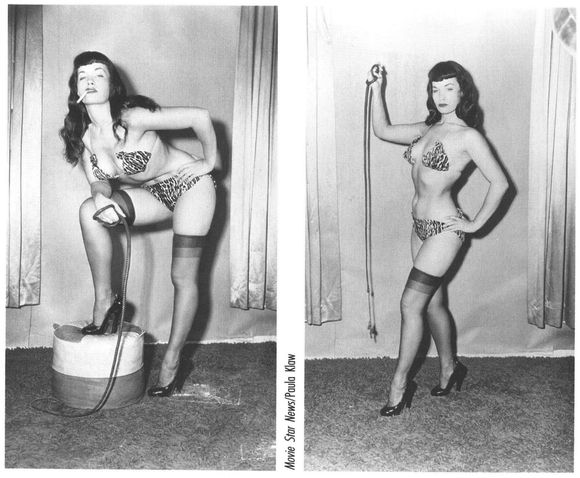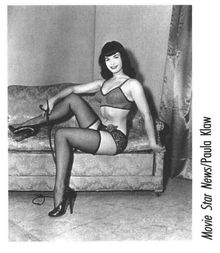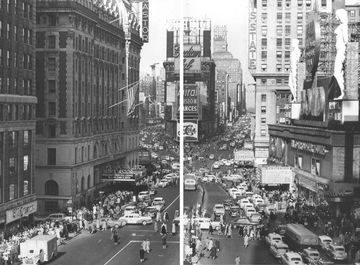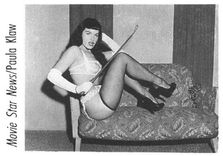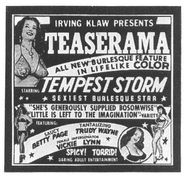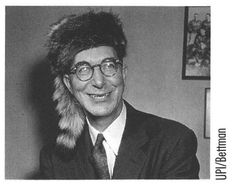She was the queen of fifties pinups, the princess of whips and chains. She became a living legend, disappeared into seclusiononly to emerge again as a nineties cult goddess and national obsession. She became the Betty Page of our dreams and the Betty Page of our memories.
She was an icon from another nostalgic time agoa different kind of Marilyn Monroe imagethat spawned a cult obsession that would transcend a forty-year generation. Betty Page would belong to the ages. She would belong to our national popular culture. Betty Page would live on forever in our fantasies.
It began on April 22, 1923pre-Roaring Twenties, Warren Hardings scandal-ridden presidency. Like Davy Crockett, Betty Page was born on a mountaintop in TennesseeKingsport, just outside of Nashville. She was the daughter of Roy and Edna Page. Her mother was part Cherokee Indian. Her dad, part boozer and womanizer. When her father died during the deep depression of 1938, Betty and her brother and sister were sent to an orphanage.
A young and voluptuous teen, Betty Page attended Nashvilles Hume-Fogg High School where she was active in thespian and debate club extracurriculars. She maintained an A average and generally disdained dating and social pursuits. Upon graduation, her academic achievements earned her a DAR scholarship to Peabody College for Teachers in Nashville. With her eventual B.A. degree and a teaching certificate in hand, Betty taught English at a local high school. But her career as a teacher was short-lived.
She married her high-school sweetheart, Billy Neal, in 1942, just prior to his World War II enlistment in the Navy. Betty soon relocated to San Francisco where her sister lived. But she was restless and ambitious, and her unusually sexual look soon beckoned her to Hollywood, U.S.A.
While her husband was off in the Pacific theater, Betty consumed Hollywoodtaking acting classes and singing and dancing lessons. But she was not discovered until a man named Art Grayson, chief honcho of a tiny talent agency, took some spec pictures of her and submitted them to the august studios of 20th Century-Fox.
Overleaf: This was the world Betty Page tried to conquer. Pictured is Times Square in 1952, in its post-burlesque and pre-video arcade era. (UPI/Bettman)
Her Fox screen test in 1945 almost paralleled the birth of Marilynat the same time, some studio. But her Hollywood debut fizzled from its inception. Not the look, Too strong a Southern accent, was the word handed down.
When her husband, Billy, returned from the war in 1946, Betty Page said good-bye to Hollywood and the dream factory and moved back home to Nashville. But the convenient marriage of high school sweethearts soon evaporated. Betty departed to Miami, then to Haiti briefly.
She came to New York City in 1948as a secretary on Wall Streetbut in search of a career as a model and actress. Betty took acting lessons which cost money. To supplement her income she posed as a model. She also appeared in some summer stock theater in New York and Pennsylvania over the next few years, but her distinctive accent and sensuality limited her acting roles.
Circa 1952, as the legendary story goes, Betty Page was discoveredby an amateur photographer named Jerry Tibbs. He found her on the sand at Jones Beach, Long Island, and took some photo shots of her. He also suggested that she comb her black bangs down to just above her eyes.
Tibbs submitted his new-look photos of Betty to Robert Harrisons beauty magazines Wink, Titter, and Eyeful . The covers of these sizzling magazines always featured a pinup and were filled with scantily clad beauties in burlesque-type poses. Harrison was duly impressed with the new standard of beauty that Betty set with her dark black shoulder-length hair, accompanying bangs, and exotic, voluptuous figure. It was Harrison who then introduced Betty to Irving Klaw, the self-promoting impresario of mail-order girlie pix. It was the early 1950s, a time of Ike and Willie Maysand Betty Page was about to become a girlie pic superstar of Irving Klaws famed Movie Star News and Movie Parade. She was about to become the queen of bondage pinups.
Irving and his sister Paula Klaw were one of the first to sell movie star pictures. When their business grew, they realized that there was an overt demand for naughty pictures which featured light bondage and sprawling situations, something the Klows could not supply through Hollywood. It was then that they began using local New York models. Irving Klaw had sensationalized the world of girlie pix with sultry sirens in bondage posesgirls fighting with each other, women being tied up or tortured with whips and chains, women in peril or in simulated pain. Betty Page soon became his star performer. A photographers dream, she began to appear in Klaw short films with enticing names like Teaserama and Striporama (which also costarred famed stripper Lili St. Cyr). She had that look, that curvaceous body, and the sensual aura that turned on the stag-party audience and libidos of men and boys. For several years she appeared in over fifty Irving Klaw film shorts. She had captivated mole fantasies everywhere. She was truly the Queen of Bondage.
In the mid-fifties, Betty ambitiously sought to free herself from her bondage: aura. She took acting lessons from Herbert Berghof, tried to get into The Actors Studio, and regularly auditioned for Broadway and summer-stock roles. She made several appearances on the summer circuit at Long Island playhouses. She also played a small dramatic part on The U.S. Steel Hour and was included in a few television variety programs. It was rumored that Howard Hughes solicited Irving Klaw about the availability of Betty Page, but she turned him down.
Senator Estes Kefauver, a Democrat from Tennessee, pictures in one of his infamous coonskin caps. It was Kefauver who destroyed the many photographs and films of Irving and Paula Klaw, the majority of which starred Betty Page.
Although nothing starworthy or memorable materialized in her acting career, Betty found adulation and remuneration from her camera club shootings. Professional and amateur photographers would continuously snap her pictures for an hourly fee. During this period of Betty exploitation, her personal life was remarkably quiet and nondescript, with no particularly known men or lovers as companions. She had fewer female friends.

